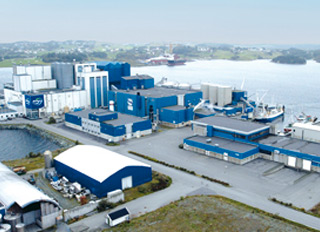
Last week the Feed Design Lab (FDL), a research and education centre for innovation and sustainability for the animal feed industry, successfully completed its first test.
FDL sets out with an aim to promote innovation and facilitate the sharing of knowledge in the animal feed industry, in order to realise a sustainable animal production chain.
On the 4th of April the Feed Design Lab (FDL) was officially opened. A collaboration between (feed manufacturers and technology companies), research institutions and the government. FDL is located in Venray, near the port of Wanssum.
After the official opening, the pilot plant started up and all nine different machines in the plant. In May, the first test feeds were produced, and last week was the day that the first official tests could be started.
The first trials, conducted with partners - Dutch feed producers Vitelia, resulted in the successful test of a new fat (with different processes and application times) used in the manufacturing of pig feeds.
The Feed Design Lab is an actual working production line for feedstuffs (and animal feed) with which product developers, nutritionists and feedstuff technologists can test endless variations and combinations with widely diverging processing operations.
They can grind, sieve, weigh, mix, dose, dry and even expand, extrude and vacuum coat under all sorts of strict conditions. It is an ideal environment in which to conduct all sorts of trials and experiments and test all sorts of production processes without running up large costs.
Due to the use of modern and advanced technology, the Feed Design Lab can be aimed at achieving high-quality and extremely exact results.
The production line is constructed in such a way that it can be switched over quickly. Processes can be coupled to one another and ingredients, conditions or processing operations can be varied.
The Feed Design Lab acts as a multi-flexible laboratory in an actual operational situation. It is an ideal environment in which to conduct all sorts of trials and experiments and test all sorts of production processes without running up large costs.
The Feed Design Lab can also serve as a small-scale production location. New products can be produced during the research phase without the need for immediate heavy investment by the company in the production process. This makes introducing new products to the market less risky. If successful, a production process can also be delivered. The Feed Design Lab uses existing machines and apparatus. This development factory has a production capacity of 200 to 2000 kg per hour.
FDL is developed around a network in which feed and technology from home and abroad work together in an open innovation network. Feed Design Lab currently has 37 partners. Within this network of knowledge and innovation in favour of the preservation of the animal feed industry been developed
Imtech Nederland and Imtech België together provided the automation platform to which the Dinnissen equipment was connected. Other initiators and partners include DSM, Vitelia, HAS University of Applied Sciences in Den Bosch, Farmers Deurne, Nuscience, Tebodin, Coppens Animal Nutrition, Municipality of Venray, Deutsche Tiernahrung, Duynie, Fransen-Gerrits, Imagro , LLTB, Taminco, United Petfood, Van Aarsen, Farmers Belgium, Rabobank Venray Horst, DSM, Arvalis, CPM, Greenport Venlo, Knowhouse.
Feed Design Lab was partly made possible through a loan from the Province of Limburg and a subsidy in the framework of practical learning.







